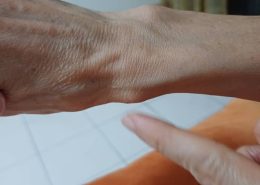winter season started and i am having pain in my knee. what could be the cause and what medicine should i take. ?
One way to know if the in-toeing gait is happening at the hips level is to observe the kneecap when your child is walking. If the kneecaps are facing towards each other, chances are, it’s coming from the hips. The way to manage this case would be to stop the habit of “W” sitting first (top priority)Read more
One way to know if the in-toeing gait is happening at the hips level is to observe the kneecap when your child is walking. If the kneecaps are facing towards each other, chances are, it’s coming from the hips. The way to manage this case would be to stop the habit of “W” sitting first (top priority). We would also need to encourage exercises that helps strengthen the glutes (muscles at the buttock region). Depending on severity, custom-made insoles can help to stop them from in-toeing as well. As for shoes, there aren’t any shoes out there that can help with correcting in-toeing gait.
The above is just one of the causative factors of in-toeing, and the management will differ if the underlying cause is coming from other levels. Given the complexity of the issue, we would recommend any child who is still intoe-ing after the age of 3 to seek a medical opinion. That way, you can also receive guidance on how to manage your child’s condition.
Hope this helps!
Saw Yu Ting,
DPM, Chief Podiatrist, Straits Podiatry.
Website: http://www.straitspodiatry.com/
Facebook: https://www.facebook.com/Straits.Podiatry


Knee pain during the winter season is very common, especially amongst the older population. This can result from several factors, including the cold weather causing joint stiffness and discomfort, particularly in individuals with arthritis or previous joint injuries. Reduced physical activity duringRead more
Knee pain during the winter season is very common, especially amongst the older population. This can result from several factors, including the cold weather causing joint stiffness and discomfort, particularly in individuals with arthritis or previous joint injuries. Reduced physical activity during colder months can also lead to muscle stiffness and exacerbate joint pain. If you have a history of arthritis, symptoms may worsen in winter due to changes in joint fluid and increased stiffness.
To manage the pain, keep the knee warm using thermal wraps or heating pads, and maintain regular low-impact exercises to improve joint mobility. Over-the-counter pain relievers such as ibuprofen or acetaminophen can help with pain, while topical creams containing menthol or capsaicin may provide localised relief.
If the pain persists or worsens, please do consult a doctor for further evaluation and proper treatment options. They may recommend imaging studies such as X-rays if indicated, physical therapy, or other forms of interventions.
Dr. Say
Medical Officer
Disclaimer: The information provided on this forum is for educational purposes only and not intended as medical advice. Please consult a healthcare provider for any medical concerns, diagnosis or treatment.
See less